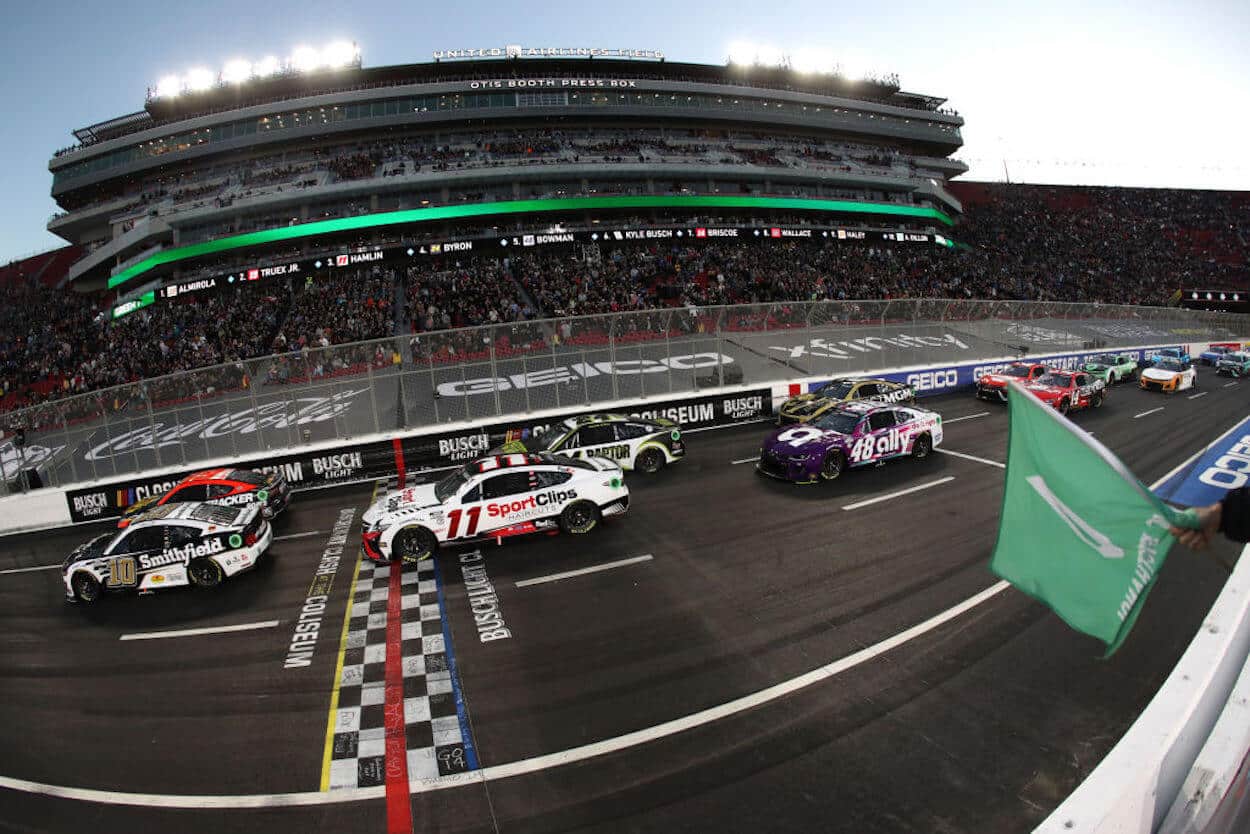NASCAR
A Seemingly Minor NASCAR Rule Change Could Have a Huge Effect During Speedweeks

NASCAR announced a handful of somewhat minor rule changes shortly before the Cup Series headed to California for the Clash at the Coliseum to begin February, but one of those seemingly small adjustments could have a big impact on Daytona Speedweeks.
The sanctioning body implemented a “choose rule” during the 2020 season to allow drivers to pick which of the two lanes they preferred to start from on a given restart. It is a setup many short tracks and dirt tracks have used for ages, but NASCAR had previously based the restart order solely on the order drivers exited pit road.
The pole sitter or leader on a restart had enjoyed that privilege since NASCAR moved to double-file restarts in 2009, but every driver in the field has had that same opportunity since late in the 2020 season — except at road courses and superspeedways.
Road Courses and superspeedways have never previously used the choose rule
Those two types of tracks were exempt from the choose rule because of the unique circumstances of the races they typically produce.
Road courses typically have many twists and turns that could make the choose decision rather messy, and the drafting that creates pack racing on superspeedways had previously pushed NASCAR to avoid the choose rule at Daytona International Speedway and Talladega Superspeedway.
The effects of the draft at those tracks force drivers to work together to make passes and, not surprisingly, push drivers to try to find teammates — or at least drivers from the same manufacturer — to work with and make their way through the field.
Often, the leader on a restart would lay back as the field gathered speed so a teammate could fall into place quickly and the pair could begin drafting together as soon as possible.
That scenario likely won’t be necessary nearly as often going forward because road courses and superspeedways will now be able to use the choose rule, beginning this week at Daytona.
Instead of a driver such as Martin Truex Jr. having to slowly gather speed to allow Denny Hamlin to slide down in front of him, the two drivers will now have the option to line up nose to tail before the race ever takes the green flag for a restart.
Perhaps NASCAR officials saw the rule in effect at Atlanta Motor Speedway last year after a reconfiguration of the 1.54-mile track created superspeedway-style racing that looked quite similar to the packs that traditionally race around the 2.5-mile track at Daytona and the 2.66-mile surface at Talladega.
The two races at Atlanta in 2022 weren’t any safer because of the choose rule. Both events had more than 10 caution flags, but the track is also substantially smaller than Daytona and Talladega, which forces action to happen faster regardless of how the field lines up on a restart.
Choose rule could provide another edge for large, multi-car teams
Maybe the choose rule will decrease the chaos that can happen during restarts at superspeedways as teammates try to find each other as quickly as possible.
It also might create a larger advantage for organizations that field multiple cars, which could be a detriment to the sport given the excitement created by a record-tying 19 different winners during the 2022 season.
For example, Hendrick Motorsports driver Alex Bowman could now choose to line up behind one of his three teammates if they happen to be leading the race and Bowman is running second. Previously, Bowman would have to line up alongside them on the front row, but now they could line up together in one lane and force competitors to use the other lane.
Drivers for smaller teams, on the other hand, won’t have nearly as many opportunities.
Bowman would have a higher likelihood of finding a teammate to work with at the front of the field than drivers for teams such as RFK Racing, 23XI Racing, or Richard Childress Racing, which field only two full-time cars.
Of course, restarts are only a portion of the circumstances that feed into how a race unfolds, but smaller teams still tend to struggle against larger teams that have inherent advantages, even with the Next Gen car model NASCAR introduced in 2022. The sanctioning body then also forced all teams to purchase their car parts from a single supplier.
Those changes helped create a memorable season a year ago, in large part because smaller teams finally had a better chance to compete for wins and playoff spots. Plus, superspeedways have long been tracks to which small teams pin their hopes because the draft helps keep much of the field in one large group instead of the leader being able to drive away.
Maybe that will still be the case when the cars line up two-by-two night after night at Daytona, but it was just as likely a rule that didn’t need to be changed in the first place.
All stats courtesy of Racing Reference.











